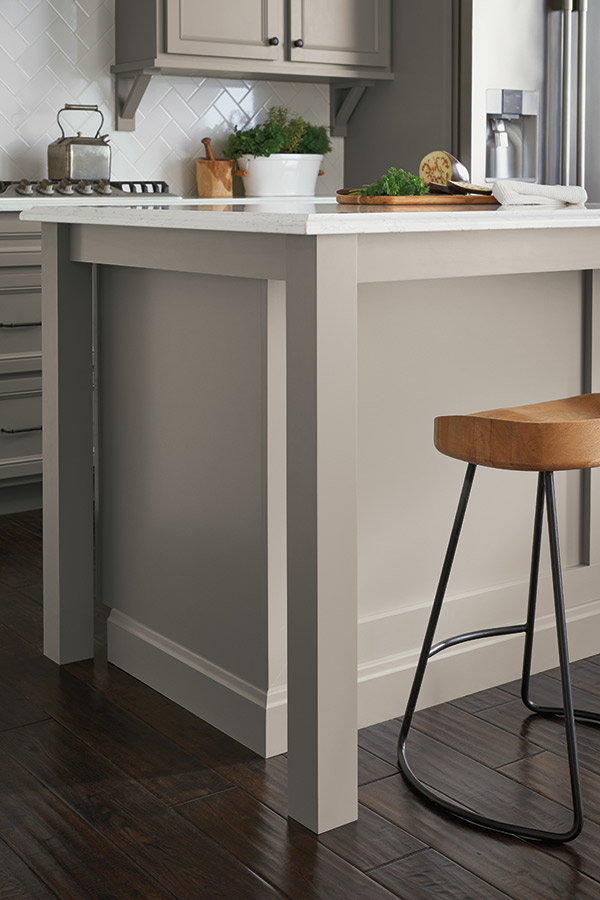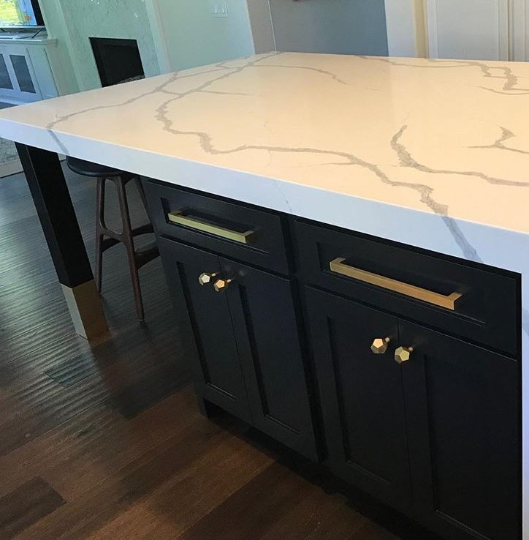Secret Considerations for Locating the most effective Legs For Kitchen Area Island for Your Style
When selecting the suitable legs for your kitchen island, numerous essential considerations enter play that can substantially affect both capability and aesthetics. The option of elevation, product, and design must straighten with your overall cooking area layout to ensure a harmonious appearance. In addition, stability and maintenance requirements are essential for lasting use and simplicity of care. Recognizing these aspects can improve your cooking area's practicality and visual charm, yet the nuances of each factor to consider can typically be neglected. What ramifications might these options have on your kitchen area's total environment?
Determine Your Design Choice
Identifying your design choice is important when selecting the optimal legs for your cooking area island. The legs of your kitchen area island not only serve a useful purpose however also contribute substantially to the total aesthetic of the room. Identifying your design style-- be it modern-day, rustic, typical, or commercial-- is crucial.
For a modern-day kitchen area, think about streamlined, minimalistic legs that complement open rooms and tidy lines. Typical kitchens often favor transformed or ornate legs, which can add a touch of beauty and elegance.
Additionally, take into consideration the height and percentage of the legs in connection to the island's surface area. Inevitably, your style preference will influence not only the choice of legs yet likewise the overall consistency of your kitchen area's layout.
Select the Right Product
Picking the right product for your kitchen island legs is critical in ensuring both longevity and aesthetic appeal. Different materials provide unique benefits, and the choice typically reflects your style choices and practical needs.
Timber is a popular selection, supplying heat and convenience. It can be discolored or repainted to match your kitchen area design, making it versatile to different designs, from rustic to modern. However, timber might need regular upkeep to preserve its look and stability.

If you look for an one-of-a-kind touch, consider acrylic or glass products. They can create an illusion of room and agility in your kitchen, making them an excellent option for smaller areas - Legs For Kitchen Island. These alternatives might need cautious handling and maintenance to stay clear of scrapes.
Inevitably, the material you choose should straighten with your cooking area's general style, ensuring that the legs offer both decorative and useful functions.
Think About Height and Percentages
When creating a kitchen area island, elevation and proportions play an essential function in making certain performance and comfort. The standard height for a kitchen island generally ranges from 36 to 42 inches, aligning with conventional counter elevations or bar elevations, specifically. This dimension is important for harmonizing with surrounding countertops and feceses, allowing ease of use throughout dish preparation and social interactions.
Additionally, the island's percentages need to match the general kitchen layout. A well-proportioned island should not overwhelm the space; rather, it must produce a balanced visual. Think about the ratio in between the island's size and length, guaranteeing it supplies sufficient area without crowding the cooking area. A basic guideline is to keep a width of 24 to 48 inches, helping with activity and availability.
Furthermore, the elevation of the legs or base can influence the aesthetic appeal and capability. Taller legs may offer a more contemporary, airy feel, while much shorter ones can evoke a standard, based look. Eventually, meticulously considering height and percentages will cause a cooking area island that is both functionally reliable and visually attractive, boosting the overall style of the room.
Assess Stability and Longevity
A kitchen island's legs need to not just complement its elevation and percentages yet additionally provide appropriate security and resilience to sustain day-to-day tasks. The legs are important to the overall performance of the island, as they birth the weight of the kitchen counter and any extra tons, such as devices or food prep work tasks.
When evaluating stability, it is vital to consider the leg design and product. For circumstances, durable steel or strong wood legs typically use premium strength compared to lighter products like crafted timber or plastic. In addition, a bigger base can boost security, minimizing the danger of tottering or tipping during use.
Sturdiness is similarly crucial; the legs must withstand deterioration from daily use. Think about surfaces that safeguard against scrapes, damages, and wetness, particularly in a kitchen environment. Evaluate the quality of building, such as joints and fastenings, which can significantly impact the legs' lasting efficiency.
Ultimately, investing in well-crafted legs that focus on security and toughness will certainly ensure look at here now your kitchen island remains a reliable work space for many years to come, boosting your culinary experiences while keeping aesthetic allure.
Consider Upkeep and Care
Upkeep and care are essential factors to consider for ensuring the durability and performance of kitchen area island legs. When choosing legs, it is vital to evaluate the products made use of, as different alternatives require differing levels of upkeep. Wood legs might require regular refinishing or securing to prevent wetness damages and scratches, while metal legs might require normal polishing to preserve their sparkle and prevent rust.
Additionally, the coating put on the legs can Bonuses influence upkeep demands. A high-gloss finishing might be less complicated to clean however might reveal scratches and fingerprints a lot more conveniently than a matte finish. It is recommended to pick products and coatings that enhance your lifestyle; as an example, if you often host gatherings, choose long lasting products that can hold up against damage.
Additionally, take into consideration the cleansing process involved in maintaining these legs. Smooth surface areas frequently need very little effort, while complex designs might accumulate dirt and gunk, requiring even more labor-intensive cleaning methods. Legs For Kitchen Island. Inevitably, factoring in the maintenance and care required for your selected cooking area island legs will not only improve their visual charm however additionally ensure their practical integrity in time
Conclusion
Finally, selecting the optimum legs for a cooking area island demands cautious consideration of various factors, consisting of design style, material selection, security, maintenance, and elevation. Each aspect plays a critical function in making sure that the legs not only enhance the visual appeal of the cooking area however also give the needed support and toughness for daily usage. An educated decision will eventually contribute to a practical and visually pleasing cooking area environment.
The legs have a peek at this site of your cooking area island not only offer a practical objective however additionally contribute considerably to the total aesthetic of the room.Maintenance and treatment are critical factors to consider for guaranteeing the long life and performance of cooking area island legs. Wooden legs may call for regular refinishing or sealing to protect against moisture damage and scratches, while metal legs might need regular polishing to keep their shine and stop corrosion.
Ultimately, factoring in the upkeep and treatment required for your selected cooking area island legs will certainly not only improve their visual appeal however additionally ensure their functional stability over time.
